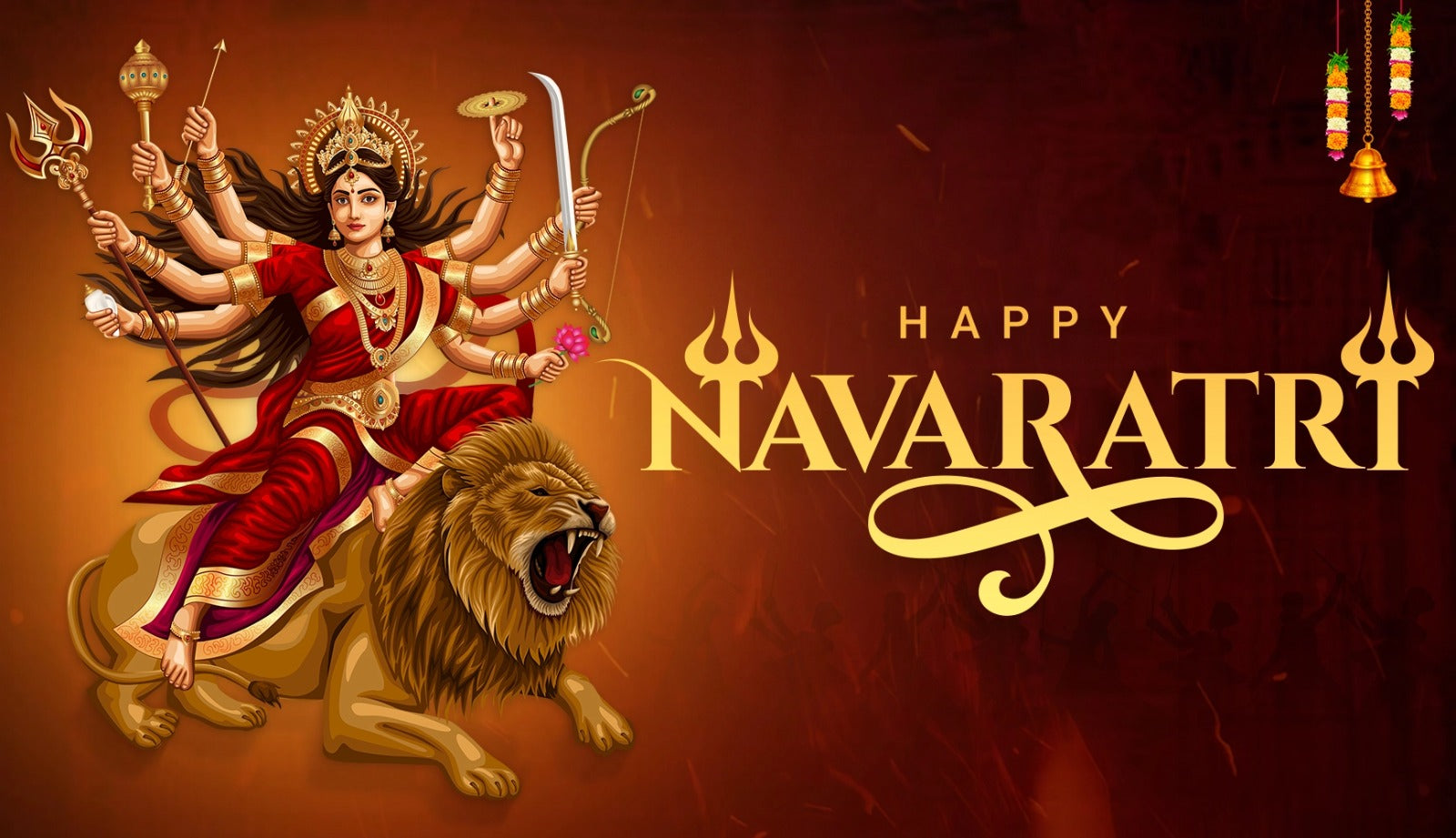
Navaratri 2024
About Navratri Festival
Navratri means "nine nights" in Sanskrit. There are two celebrations of Navratri every year: the one in spring is called Chaitra Navratri & the other one in autumn is Sharad Navratri. Sharad Navratri, celebrated more widely, falls in the Hindu lunar month of Ashwin, usually from September to October & the worship performed during this period is dedicated to Devi Durga. Different days of Navratri are related with different forms of the Goddess, each having its own significance and rituals.
How to Celebrate Navratri
Though there are regional differences, the common traditions followed for the celebration of Navratri in different parts of India are as follows:
Worship of nine forms of Durga: The nine-day celebration of Navratri is dedicated to all the many forms of Goddess Durga: Shailaputri, Brahmacharini, Chandraghanta, Kushmanda, Skandamata, Katyayani, Kalratri, Mahagauri, and Siddhidatri. Devotees worship the Goddess by praying and offering flowers and other items to her.
Fasting: While some other devotees keep a fast during the nine holy days of Navratri, they avoid eating different food items like meat, alcohol, and grains.
Garba and Dandiya: The festival became prominent in the state of Gujarat and other western parts of India for the dynamic Garba and Dandiya. These are high-energy folk dances done in colorful traditional attire and accompanied by dandiya sticks.
Bhajans and Kirtans: During the nine nights, devotional songs and hymns are sung in praise of the goddess. Special singing sessions are organized in most temples and households.
Jagrata: In North India, especially on the nights of worship, the lovers will stay awake and sing songs and hymns in this goddess' devotion.
Feasting: Many families and friends engage themselves in special vegetarian dishes as a part of the celebration in Navratri. The popular delicacies during this festival are sabudana khichdi, kuttu ki puri, and halwa.
The Nine Forms of Durga
Each day of Navratri is dedicated to a different form of Goddess Durga:
- Shailaputri - She is the Daughter of the Mountains, a very fierce as well as powerful portrait of strength.
- Brahmacharini - represents knowledge and wisdom.
- Chandraghanta - Goddess with a half-moon-shaped crown, reflects bravery or self-discipline.
- Kushmanda - Represents cosmic energy as she created the universe.
- Skandamata - Is the mother of Skanda, the war god, showing her maternal love as well as protection for her children.
- Katyayani- This fierce warrior goddess signifies the annihilation of evil.
- Kalratri- The dark goddess, dissipation of ignorance.
- Mahagauri- The fair and pure goddess, signifying internal peace & tranquility.
- Siddhidatri- Bestowing boons, fulfillment, it represents spiritual attainment
Rituals Offered during Navratri
Apart from the usual worship of Durga, following are some of the rituals practiced during Navratri:
Kalash Sthapana (Ghatasthapana): The first day is marked with the installation of a pot filled with water, covered at the top with a lid, and decorated with mango leaves and a coconut. This pot is regarded as the symbol of Durga, and all worship is offered to it during the nine days.
Navratri Pooja: Worship of different forms of Goddess Durga is performed by daily prayers and rituals. Devotees chant mantras, and flowers, fruits, and sweets are offered to the goddess. Aartis are also performed in this pooja.
Kanya Poojan: The worship of young girls, who represent the nine different forms of the goddess, is reserved for the eighth or the ninth day. They are said to be invited to houses and then fed and presented with new clothes and other gifts.
Reading of Holy Texts: Holy literature including the Durga Saptashati or Devi Mahatmya must be read by all devotees. It narrates all stories and glories relating to the goddess Durga.
Offering Prasad: The devotees prepare special dishes and offer them to the goddess. Later, these offerings were distributed among family members and friends, which is known as prasad.
Visarjan: On the tenth day, called Vijayadashami or Dusshera, the idols or pictures of the goddess are immersed into different water bodies. It ritualistically means that the goddess is returning to her abode in heaven and marks the triumph of good over evil.
These are rituals meant to symbolize the victory of good over evil & an offering to seek the goddess Durga's blessings, prosperity as well as happiness.
Explore our Navaratri Products
Explore our Navaratri Products Celebrate Navratri with Giriaus. Get an extensive range of fabulous Navratri products that can be used to adorn celebrations. From exquisitely designed idols of Goddess Durga, ethnic attire, traditional puja apparatuses & bright decorative items-everything that will help you celebrate the festival in the best way possible. Our collection is inclusive of a tinge of different gifts and accessories to share with loved ones. Log on to giriaus.com for the finest products that ensure a divine and joyous celebration of Navratri.
https://giriaus.com/products/kolupadi
https://giriaus.com/products/kolupadi-cover
https://giriaus.com/products/dhanvantri-10-inch-clay
https://giriaus.com/products/durgai
https://giriaus.com/products/andal-12-inch-clay
